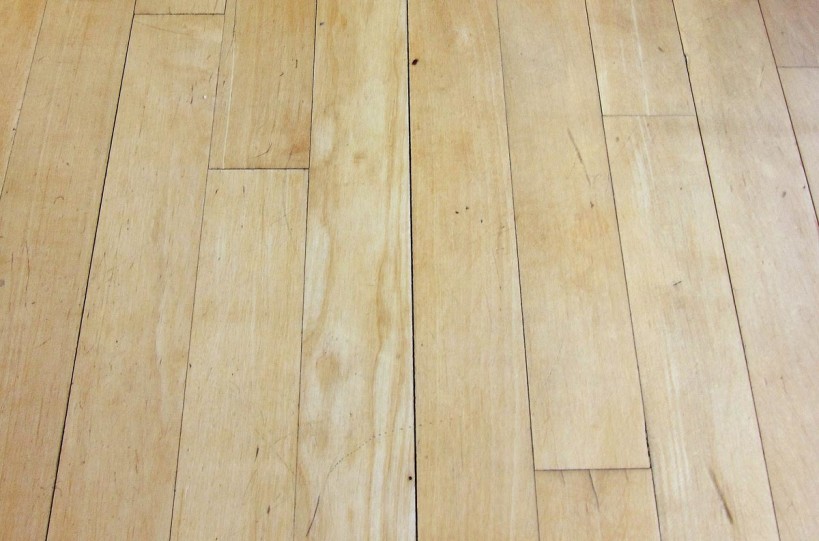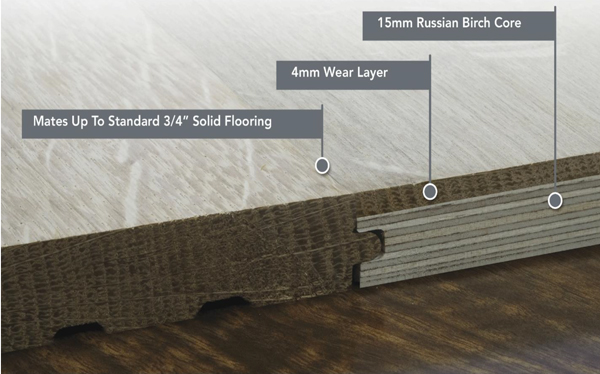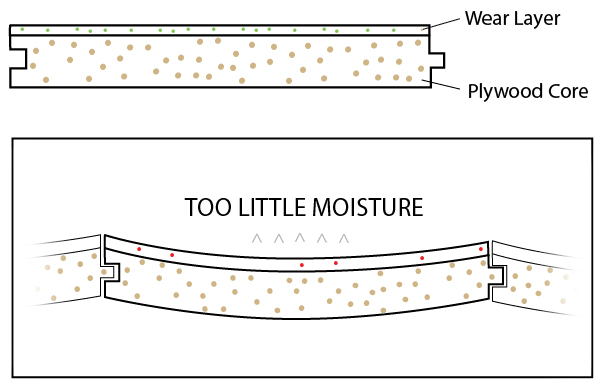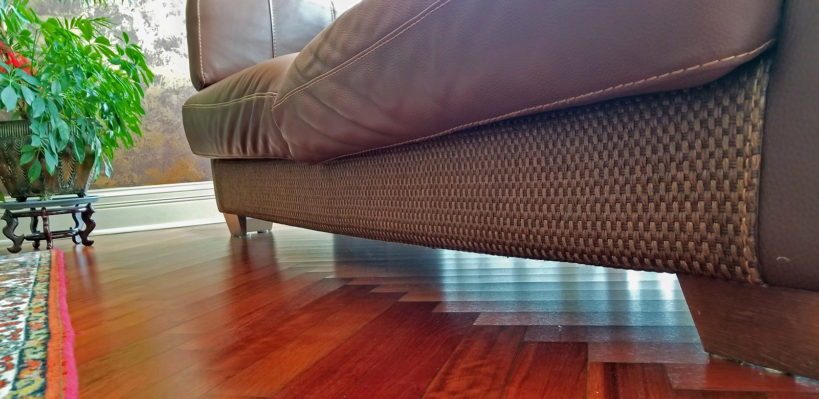Engineered Wood Flooring, Prefinished Flooring, wood floor care, wood floor gaps
Engineered Wood Flooring and Dry Cupping in the Winter
Is Your Wood Floor Cupping During the Winter?
During the winter Mr. Floor traditionally receives a high number of calls from Chicagoland customers who are seeing gaps between the planks of their hardwood floors. As we’ve written in previous publications, during the winter hot air loses its ability to hold moisture and unless humidity is added and controlled properly, gaps between floorboards occur as the wood shrinks from the loss of moisture.

During the winter Mr. Floor traditionally receives a high number of calls from Chicagoland customers who are seeing gaps between the planks of their hardwood floors. As we’ve written in previous publications, during the winter hot air loses its ability to hold moisture and unless humidity is added and controlled properly, gaps between floorboards occur as the wood shrinks from the loss of moisture.
During the hot, humid days of summer we field calls from clients whose solid hardwood floors are cupping. In many instances, the wood planks cup because excessive humidity in the air makes the wood expand, closes the gaps between slats and in the presence of excess moisture forces the wood to cup.
With more and more clients installing pre-finished engineered wood flooring, we’re getting a different type of call. It’s not uncommon for homes with engineered flooring to see cupping in the planks of their floor during the driest days of winter. That’s right, when the air has precious little moisture, we’re seeing cupping in engineered wood flooring!

It sounds counterintuitive, doesn’t it? How can too much moisture cause solid hardwood flooring to cup while too little moisture in the air can cause engineered wood flooring to cup? The answer lies in the construction of engineered flooring.
Typically, as the image above suggests, engineered wood flooring is composed of a relatively thin top layer of wood called the wear layer. During production, this appearance layer is then glued to a base layer of plywood, composite wood, or other less expensive hardwood.
While an engineered flooring format is very dimensionally stable it does have its limitations. Because the layers of an engineered floor are made of different materials, they can absorb and expel moisture at different rates. In other words, if the wear layer of an engineered wood floor plank expels moisture faster than the base layer, it may also shrink at a faster rate and in doing so it may try to pull itself away from the bottom core material. Additionally, if the Relative Humidity in the home is allowed to drop below 30%, this hot and dry air can cause shrinkage of the wear layer to express itself in the form of cupping.
The flooring industry has come up with a special term for this. Get ready, here it is . . . Dry Cupping.
 The Solution to Dry Cupping?
The Solution to Dry Cupping?

The solution to the dry cupping of engineered flooring is simple, but it does take diligence. Essentially, you must maintain the relative humidity level (RH%) in your home at or above 30% whenever possible. Now during a -20ºF cold streak like the one we have already experienced in during this 2019 winter, it’s almost impossible to keep the relative humidity at 30%. A few days at 20% or 25% relative humidity likely won’t make engineered wood flooring cup. However, extended periods of low relative humidity are likely to cause problems, so do your best to maintain a humidity level that will be both comfortable for both you and your floor!
Traditional “Wet Cupping” Can Still Happen During the Winter.
It’s important to remember that both engineered and solid hardwood flooring can cup in the driest days of winter if there is an unseen source of water beneath the flooring. For example, oftentimes when a dishwasher or refrigerator leaks, the water runs underneath the floor along the underlayment or concrete subfloor. The water will soak through the flooring planks from the bottom up causing the more common type of cupping.
Don’t assume that because you’re engineered wood flooring is cupping in the winter that it’s a case of dry cupping. This is especially true if the cupping is localized. Check for signs of leaking from your sink, refrigerator or dishwasher.
At Mr. Floor we welcome your calls concerning any problems you’re having with your wood floor. Hit the chat button on the right to chat with us now, or call us at 847.674.7500.
Igor Murokh
Igor is a graduate of the University of Illinois and holds a B.A. in Economics. He has worked in the flooring industry for over 30 years and is the VP and Sales Manager of Mr. Floor Companies in Skokie, IL. Igor is a certified wood flooring inspector (CWFI) and routinely helps clients assess flooring issues.

